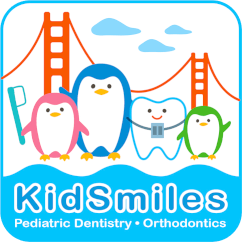
Dental Home

Starting at Age 1
We hope to establish a growing partnership with you, the parents and our patients, because we know that good dental health requires teamwork.
The American Academy of Pediatrics (AAP), the American Dental Association (ADA), and the American Academy of Pediatric Dentistry (AAPD) all recommend establishing a "Dental Home" for your child by one year of age.
The Dental Home is intended to provide a place other than the Emergency Room for parents.
Pleasant First Visit
When the child is seen at one year, the first visit can be pleasant and uneventful, introducing the child and parents to the dental office. Emphasis is on the developmental assessment of the child’s oral health. Caries (tooth decay) or developmental disturbances can be managed early. Fluoride varnish may be applied to counteract beginning decay on newly erupted teeth.
Five Things to Expect for Baby's First Dental Visit
Step 1
Clinical Examination
by Age 12 Months
- Complete medical history
- Knee-to-knee exam with guardian
- Note clinical dental caries
- Soft tissue irregularities
- White-spot lesions, tongue anatomy
- Enamel decalification, hypoplasia
- Dietary staining
Step 2
Caries Risk Assessment
- Bottle or breast fed at night on demand
- Non-water in bedtime bottle
- Decalcification/caries present
- No oral home care
- Sugary foods, snacks
Step 3
Diet Counseling for Infants
- No juice or milk in bed
- Sippy cups can encourage decay
- Avoid sugary drinks and sodas
- Encourage variety and a balanced diet
- Low-sugar snacks
- Fluorides – topical and systemic
Step 4
Oral Home Care for Infants
- Brush or massage teeth and gums 2x daily
- Use a small, soft toothbrush
- Pea-sized amount of toothpaste, with Fluoride
- Guidance on thumb sucking, pacifier
- Response for home accidents, trauma
Step 5
Future Visit
- Based on Risk Assessment
- At age one year
- Two years if delayed in development

